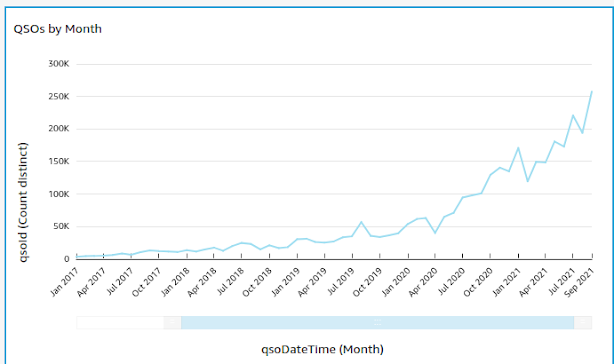The Universe on Vinyl
Author's note: This article was originally published on April 1, 2021. I might have had a little fun toward the end of the last paragraph, and with the last link. The rest of the article is legit, and I genuinely find it mind-blowing that sound waves played a decisive role in shaping our universe.
If you haven't yet discovered PBS Space Time, you're missing out on a treat. Each week, host Matt O'Dowd chooses a physics topic—usually astrophysics—and presents it in a way that is accessible without being condescending. You don't need to be a physics major to follow his presentations, but O'Dowd does assume a reasonably intelligent audience and then challenges that audience week after week with subjects that are complex and often mind-blowing.
A particularly memorable episode described the baryon acoustic oscillations. There was a time shortly after the Big Bang when the universe was dense enough for sound waves to propagate across the entire universe. Over time, the universe expanded to a large enough size of low enough density that it could no longer serve as a medium for sound waves, and the wave state at that particular moment is preserved to this day in the structure of the universe. On earth (and other places with atmospheres), sound propagates through air as compressional waves; a disturbance in the air increases its pressure, the air returns to its normal pressure but then, because of inertia, overshoots and goes below normal pressure, seeks again to return to normal pressure and overshoots again, and continues this oscillation. The depressurizing air exerts pressure on adjacent air while the re-pressurizing air draws pressure away from adjacent air, setting up waves of varying air pressure levels that propagate as sound. Compressional waves similarly travelled through the baryon soup of the early universe. What we now see as clusters of galaxies and the space in between can be thought of as the remains of the peaks and the troughs of those ancient sound waves, long since silenced.
About four years ago, my wife gave me a turntable as a Christmas present, and I became a willing and enthusiastic participant in the vinyl craze. There's a lot about the experience of vinyl records to enjoy. There is the tactile experience of holding the record in your hands and dropping the tone arm that makes for a more engaging music-listening experience. There are the trips to the local record shop (at least there were, pre-quarantine, and hopefully will be again, post-quarantine) where each album becomes a lesson in music history. I'm generally not one of those analog-has-a-warmer-sound guys, but occasionally there are some wonderfully produced analog recordings—The Doors’ début album comes to mind—that sound noticeably better on vinyl than on consumer digital formats. And then there's that moment of awe over just what it is that you're holding in your hands. When I grab the Fritz Reiner/Chicago Symphony recording of the Bartók Concerto for Orchestra off my record shelf, I'm holding a tangible link back to that original performance. Carved into the record's grooves are the very vibrations that Reiner and his incredible musicians put into that concert hall's air a decade before I was even born.
The stars and galaxies that we see when we look—or point our telescopes—up at the night sky hold within their structure the vibrations of that aeons-old sound. Our universe is the ultimate vinyl record. A natural question, then, is what did it sound like? Like all spacecraft, the Perseverance rover landed on Mars with a package of scientific instruments. Yet it's the imagery, more than data from any of the other instruments, that captures the public imagination. Understandably, we have a natural bias for that which we can experience through our senses; the rover's cameras become an extension of our eyes. Can we extend our ears back to that primordial sound? In principle, the answer should be yes, but in practice the process of reconstructing the original sound from a universe-sized snapshot of the wave state is a formidable mathematical challenge. Modeling acoustic properties in one dimension, like a violin string, is fairly straightforward. Two dimensions, like a drum head, is vastly more complex. In three dimensions, the task becomes daunting, but some promising research has emerged. Dr. Richard Warwick, at the East Anglia Polytechnic University, has been using supercomputers to model the baryon acoustic oscillations, and has presented a tentative simulation. On this glorious spring day, I hope you'll take a moment to roll through those sounds.



Comments
Post a Comment